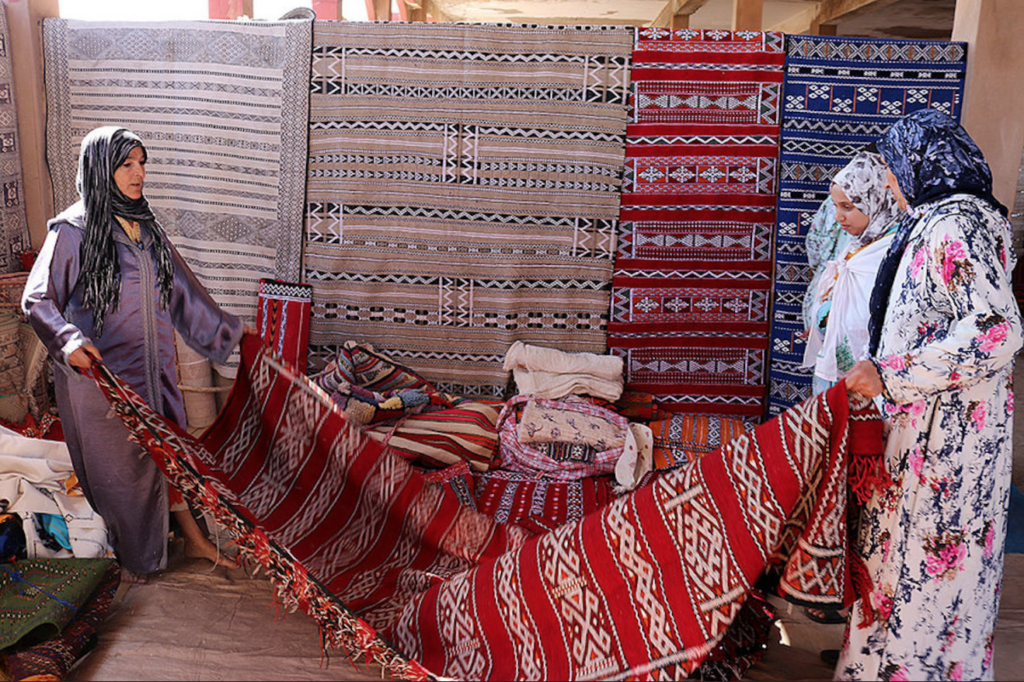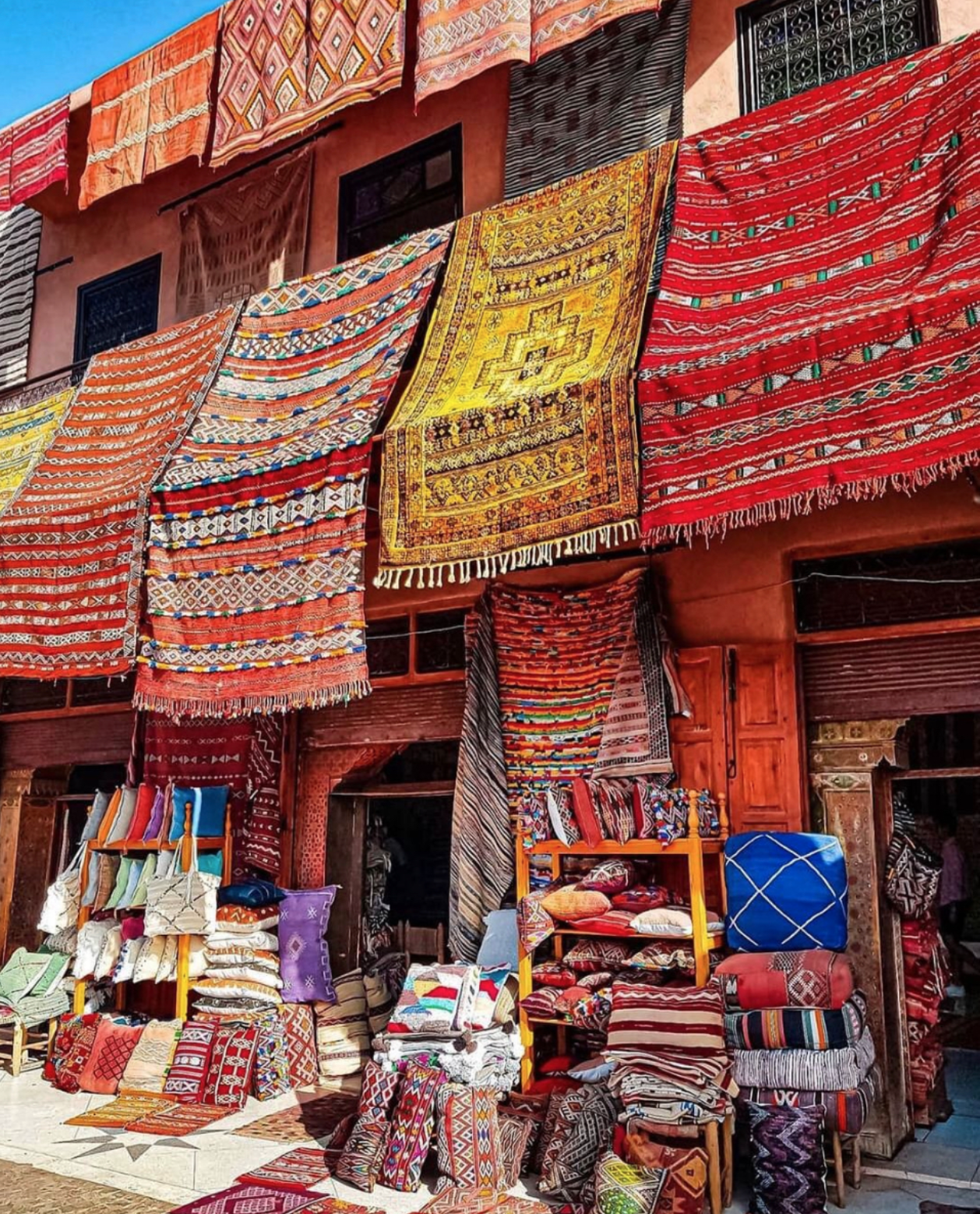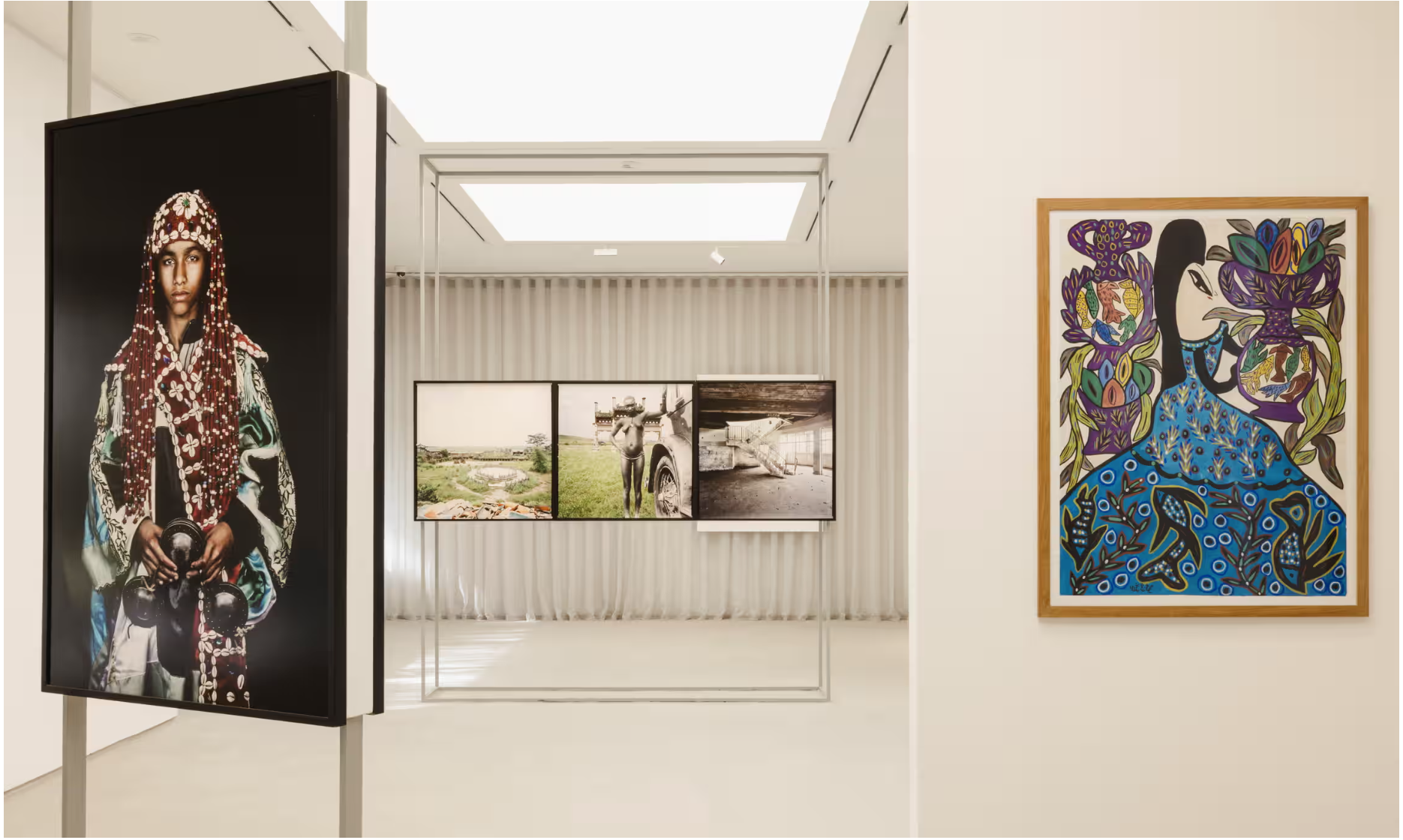Moroccan rugs have long been celebrated for their exquisite craftsmanship, rich cultural heritage, and striking aesthetic appeal. These handwoven masterpieces, crafted by Berber tribes in the Atlas Mountains and other regions of Morocco, seamlessly blend tradition with contemporary design. Whether placed in a minimalist loft, a bohemian-inspired home, or an industrial-style space, Moroccan rugs bring warmth, texture, and character to any setting.

The Rich History of Moroccan Rugs
Moroccan rugs date back centuries, originating from various indigenous Berber tribes across the country. Each region has developed its own distinct weaving style, patterns, and color schemes, making every Moroccan rug a one-of-a-kind creation. Traditionally, these rugs were woven by women and used for practical purposes, such as insulation in cold mountain regions or bedding for nomadic tribes. Over time, their intricate designs and cultural significance transformed them into sought-after pieces in global interior design.
Types of Moroccan Rugs
1. Beni Ourain Rugs
Beni Ourain rugs are among the most famous Moroccan rugs, known for their minimalist geometric patterns in black or dark brown against a soft, creamy-white wool background. These rugs, woven by the Beni Ourain tribes in the Middle Atlas Mountains, are made from high-quality sheep’s wool, making them exceptionally plush and luxurious. Their neutral tones and timeless design make them a perfect fit for modern and Scandinavian-style interiors.
2. Azilal Rugs
Azilal rugs originate from the Azilal province in Morocco and are known for their bold, colorful patterns. Unlike the muted tones of Beni Ourain rugs, Azilal rugs feature bright hues such as red, blue, yellow, and green, often combined with abstract and symbolic designs. These rugs are ideal for adding a pop of color and personality to contemporary spaces.
3. Boucherouite Rugs
Boucherouite rugs are unique in that they are made from recycled textiles such as cotton, wool, and synthetic fibers. Originally crafted by Berber women as an eco-friendly way to repurpose old clothing, these rugs display an explosion of colors and irregular patterns. Their playful aesthetic makes them perfect for eclectic and bohemian interiors.
4. Kilim Rugs
Unlike the thick, plush pile of other Moroccan rugs, Kilim rugs are flatwoven and lightweight. They often feature intricate geometric patterns and a mix of warm, earthy tones. These rugs are versatile and work well in modern interiors as wall hangings, decorative floor coverings, or even as upholstery.
5. Taznakht Rugs
Taznakht rugs come from the southern regions of Morocco and are known for their vibrant golden, red, and green hues. They often feature diamond motifs and fine weaving techniques, making them a striking addition to any living space.
Why Moroccan Rugs Are Perfect for Modern Interiors
Moroccan rugs have gained immense popularity in modern interior design due to their versatility, durability, and aesthetic charm. Here’s why they make a great addition to contemporary homes:
1. Timeless Elegance
The intricate patterns and natural materials of Moroccan rugs allow them to complement both traditional and contemporary interiors. Their timeless beauty ensures they never go out of style.
2. Texture and Warmth
Modern interiors, particularly those that follow minimalist or industrial styles, can sometimes feel cold or sterile. Moroccan rugs introduce warmth and texture, softening the look of a space while adding a cozy ambiance.
3. Unique, Handcrafted Appeal
Each Moroccan rug is handmade, meaning no two are exactly alike. This uniqueness adds character and authenticity to a home, making it feel more personal and inviting.
4. Versatile Color Palettes
From the neutral tones of Beni Ourain rugs to the vibrant colors of Azilal and Boucherouite rugs, Moroccan rugs can either blend seamlessly with existing décor or serve as a bold focal point in a room.
How to Integrate Moroccan Rugs into Modern Interior Design
1. Creating a Statement Piece
A Moroccan rug can act as the centerpiece of a living room, drawing attention with its intricate patterns and rich textures. Placing a Beni Ourain rug under a sleek coffee table or a Kilim rug in a dining area can instantly elevate the space.
2. Layering for Depth
For a stylish and cozy look, layer a Moroccan rug over a larger, neutral-colored rug. This works particularly well in modern bohemian or Scandinavian interiors, adding depth and visual interest.
3. Using as Wall Art
Some Moroccan rugs, especially Kilims and Boucherouite rugs, are stunning enough to be displayed as wall hangings. This is a great way to showcase their artistry while adding a unique decorative element to a room.
4. Incorporating in the Bedroom
A Moroccan rug placed under the bed or at the foot of the bed can make a bedroom feel more inviting. The soft wool of a Beni Ourain rug adds warmth, while a colorful Azilal rug can create a lively contrast against neutral bedding.
5. Enhancing Workspaces
Adding a Moroccan rug to a home office can make the space feel more inspiring and comfortable. A geometric Kilim rug under a desk or a small Azilal rug near a reading nook can introduce color and warmth to an otherwise functional environment.
6. Blending with Different Styles
Moroccan rugs are incredibly adaptable and work well with various interior styles:
- Modern Minimalism: A Beni Ourain rug adds softness and contrast to a minimalist space.
- Bohemian Chic: A colorful Boucherouite or Azilal rug pairs beautifully with rattan furniture, plants, and layered textiles.
- Industrial Loft: The organic texture of a Moroccan rug balances the raw materials of industrial design, such as exposed brick and metal finishes.
- Mid-Century Modern: A Kilim rug enhances the vintage aesthetic with its geometric patterns and warm hues.
Caring for Moroccan Rugs
To maintain the beauty and longevity of a Moroccan rug, proper care is essential:
- Regular Vacuuming: Use a low-power setting to remove dust and debris without damaging the fibers.
- Spot Cleaning: Gently blot spills with a damp cloth and mild soap. Avoid harsh chemicals that may affect the natural dyes.
- Sun Exposure: Rotate the rug occasionally to ensure even exposure to sunlight, preventing fading in one particular area.
- Professional Cleaning: Every couple of years, have the rug professionally cleaned to remove deep-seated dirt and restore its original vibrancy.
Where to Buy Authentic Moroccan Rugs
When purchasing a Moroccan rug, it’s essential to source it from reputable vendors who sell authentic, handwoven pieces. Some reliable places include:
- Moroccan Souks and Artisan Cooperatives: Directly buying from artisans ensures authenticity and fair trade.
- Online Marketplaces: Trusted platforms like Etsy, Amazon and House Of Moroccan Rugs offer curated selections of genuine Moroccan rugs.
- Boutique Interior Design Stores: Some high-end design stores specialize in vintage and handcrafted Moroccan rugs.
Moroccan rugs are more than just decorative elements—they are a testament to centuries of artistry and tradition. Their ability to harmonize with modern interiors, whether as a statement piece, a subtle texture enhancer, or a vibrant focal point, makes them a versatile and valuable addition to any home. By thoughtfully integrating a Moroccan rug into contemporary spaces, you can create an environment that is both stylish and deeply connected to cultural heritage.
Credit to https://techbullion.com/moroccan-rugs-a-timeless-tradition-in-modern-interior-design/



